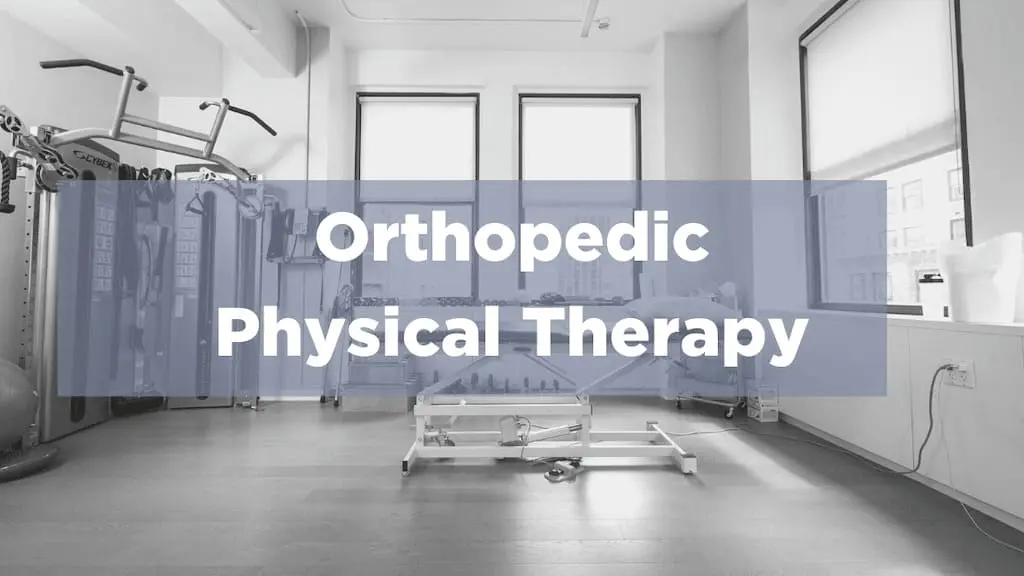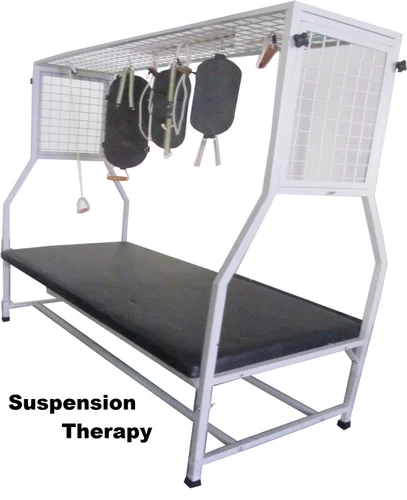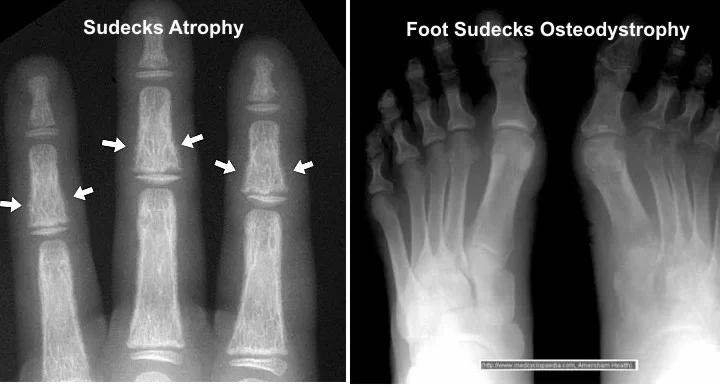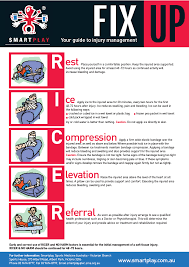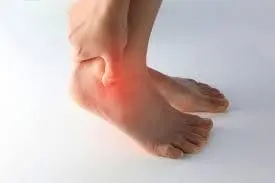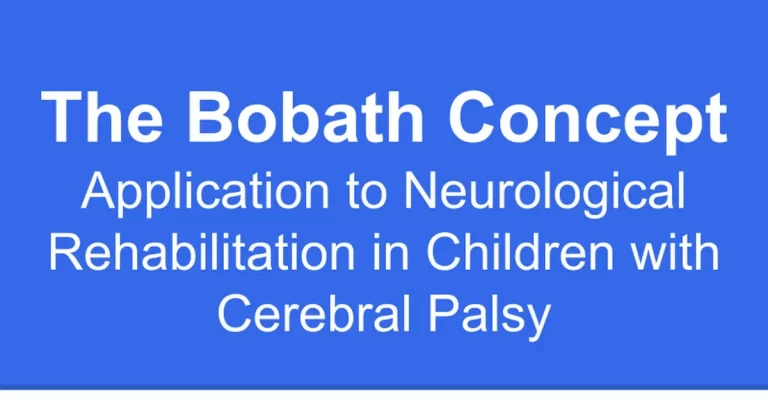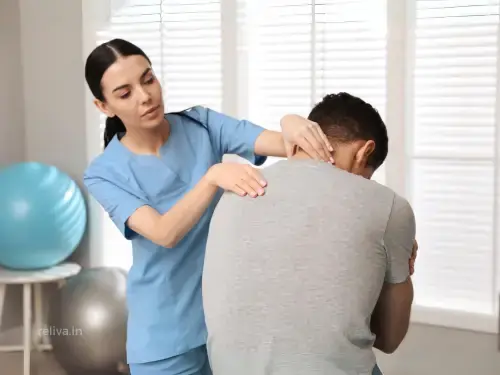Orthopedic Physical Therapy
Orthopedic physical therapy is a specialized branch of physical therapy that focuses on the diagnosis, treatment, and rehabilitation of musculoskeletal injuries and conditions. The musculoskeletal system comprises bones, muscles, tendons, ligaments, and joints, all of which work together to support the body and enable movement.
Introduction
The use of orthopedic physical therapy can change people’s lives. After an illness, accident, surgery, or other medical event, a licensed physical therapist (PT) can assist you in getting back to your regular activities. This is because the diagnosis and treatment of conditions affecting any part of the musculoskeletal system is the area of expertise for orthopedic physical therapists (PTs).
In order to treat your injury or disease effectively, an orthopedic physical therapist (PTT) integrates your musculoskeletal system with all other physiological systems, particularly your neurological and cardiovascular systems.
This post will examine orthopedic physical therapy in more detail, including what it is, when it may be necessary, and the kinds of treatments it offers.
What’s Orthopedic Physical Therapy?
Orthopedic physical therapists are highly trained professionals who assess and address a wide range of conditions affecting these structures, including fractures, sprains, strains, joint pain, arthritis, and post-surgical rehabilitation.
Your complete musculoskeletal system is taken care of during orthopedic physical therapy, including your:
- tendons,
- ligaments,
- muscles,
- bones
- connective tissue
- joints
An orthopedic specialist physical therapist (PT) can assess your health and make a diagnosis. This will consist of:
- Choosing the right motion diagnosis
- putting together a treatment strategy
- providing therapeutic treatment
- teaching you the best ways to take care of your present ailment or
- order to avoid getting worse
Hospitals, skilled nursing centers, sports facilities, outpatient clinics, and even your own home can offer orthopedic physical therapy. A clinical doctorate is now required in order to work as a physical therapist. When you see a doctor of physical therapy (PT), you are therefore dealing with someone who has completed three years of graduate school study.
What Conditions Does An Orthopedic Physical Therapist Treat?
Steve Vighetti, a fellow of the American Academy of Manual Orthopedic Physical Therapists, stated that orthopedic physical therapists treat nearly any ailment that impairs a person’s ability to move or function physically in their daily lives. Let’s examine a few of the most prevalent ailments and problems that orthopedic physical therapists handle.
Conditions Affecting The Musculoskeletal System
For the following categories of musculoskeletal disorders, orthopedic physical therapy may be used as a primary or adjunctive treatment option:
- arthritis
- bursitis
- frozen shoulder
- cancer
- Shoulder Pain
- instability in the knees
- joint discomfort
- restricted range of motion
- lower back pain
- Lyme illness
- swelling of the lymph
- muscle atrophy
- Parkinson’s illness
- plantar fasciitis
- scoliosis
- spinal stenosis
- stroke
Certain patient demographics are the focus of specialization for some PTs. For example, a sports physical therapist can assist athletes in moving correctly to help avoid injuries. They can aid athletes in their recovery from injuries sustained during athletics.
A physical therapist who specializes in treating senior citizens can assist their patients in strengthening their balance to avoid falls.
Additionally, they can support older persons in maintaining their strength and mobility as they age or in recovering from knee or hip replacement surgery. Some physical therapists focus on aiding patients in their recovery from ailments including cancer, low back pain, or the aftereffects of childbirth and pregnancy.
Pelvic floor dysfunction is a problem that people would not typically associate with physical therapy, according to Vighetti. Once you have a few kids, people tend to accept painful sex and incontinence as inevitable life experiences. People might not even be aware that you can receive help for it, but you can. You are able to alter things and observe true advancements.
Rehabilitation After Surgery
Orthopedic physical therapy can help you walk normally again, enhance your range of motion, lessen pain after surgery, and avoid having too much scar tissue accumulate. It might also assist you in regaining your strength, agility, and balance.
Orthopedic PTs frequently work with patients following procedures like:
- replacement of the hip
- knee arthroscopy knee replacement
- repair of the rotator cuff,
- heart surgery,
- cancer surgery
Rehabilitation After Acute Injury
Acute injuries are those that arise from a single physical trauma. An orthopedic physical therapist (PTT) can assist you if you sprain your ankle, tear your meniscus, or herniate a disc in your back:
- control edema and pain
- operate within the weight-bearing constraints that your physician has prescribed.
- Regaining as much range of motion as you can
- regain your strength.
- Learn to move in a way that prevents the recurrence of your problem.
Rehabilitation After Chronic Injury
A chronic injury is a type of physical harm that develops gradually over time, usually as a result of tiny, repetitive injuries to your tendons, bones, or joints caused by your movement patterns. The following are a few instances of chronic injuries:
- shin splints
- the syndrome of carpal tunnel
- elbow of tennis
To determine the exact cause of your ailment, an orthopedic physical therapist can examine your gait. They can also teach you safe movement techniques to prevent further injuries and assist you in managing symptoms like pain and swelling.
What Types of Treatments Are Used?
To assist you, orthopedic physical therapists employ a variety of therapy modalities, exercises, assistive technology, and patient education techniques.
Your therapist may employ these treatments in the following ways:
- active modalities (you perform or take part in a movement) or
- passive modalities (the therapist administers a therapy to you)
The following are a few instances of therapies that could be combined with orthopedic physical therapy.
Warm/Cold Therapy
To treat musculoskeletal pain and swelling, orthopedic physical therapists employ both thermotherapy, or heat therapy, and cryotherapy, or cold therapy. Both heat and ice helped reduce muscular injury in a 2015 study including 100 patients; however, cold applied right after vigorous activity was more beneficial in preventing muscle soreness.
Exercise Therapy
Your therapist will design an exercise program that probably consists of activities that improve mobility, strength, or balance. It’s a good idea to practice the exercises with your therapist first to make sure you’re doing them correctly. You will be urged to perform the exercises at home on a regular basis to assist increase your strength and mobility once you know how to do them correctly.
E-stim (TENS or NMES)
There is some evidence that electrical stimulation can reduce pain Trusted Source. An e-stim device is attached by the physical therapist to the affected area of your body when using this type of treatment.
E-stim gadgets come in two major varieties. Among them are:
TENS. Low voltage electrical current is used in transcutaneous electrical nerve stimulation (TENS) to reduce pain. It is believed that the electrical impulses could assist in preventing the brain from receiving pain signals from your nerves.
NMES. An apparatus that delivers electrical impulses to neurons is used in neuromuscular electrical stimulation or NMES. Your muscles tense up as a result. It is believed that repeatedly contracting muscles might enhance blood flow and aid in the healing of damaged muscles.
Traction
Joints that are injured or squeezed are relieved of pressure by traction. It can be carried out with a tool or the therapist’s hands, and it is thought to be beneficial for those who have:
- neck pain
- lower back pain
- spinal degenerative disc disorders
Hydrotherapy
Your treatment plan may include water therapy from your therapist. As part of your recovery, you may work out in a pool or whirlpool. Because water provides gentle resistance, this sort of therapy might be very beneficial if you have joint difficulties or injuries. When you work out, the buoyancy that water offers helps support you and lessens the pressure on your joints.
Soft Tissue Manipulation
Soft tissue manipulation is a type of manual physical therapy in which your muscles, ligaments, and fascia are treated by the PT using manual techniques. This is done to maximize your muscle function and break down adhesions.
While further studies are required to confirm the precise benefits of soft tissue manipulation, it is widely advised as a means of easing pain and reducing tension in the muscles.
Joint Mobilization
Using this method, a therapist gently and firmly moves your joint in the correct direction. It is a manual method, similar to soft tissue manipulation.
Dry Needling
PTs are allowed to do dry needling, a method akin to acupuncture, in certain states.
Using this method, the therapist applies a tiny amount of pressure to a trigger point on a selected muscle, usually, the one causing discomfort or tension.
Laser or Light Therapy
Low-level laserTrusted Source or light therapies are tools that orthopedic physical therapists can utilize to improve muscular function, lessen muscle fatigue, and facilitate muscle healing following an injury.
Kinesiology Taping
Kinesiology tape is a band of tape composed of stretchable cloth that is incredibly flexible. This therapeutic tape is applied to particular body parts and is frequently available in vivid colors or eye-catching designs.
Kinesiology tape may be helpful, despite the lack of research to support its efficacy. Anecdotal evidence suggests:
- Offer assistance
- lessen discomfort and swelling
- disassemble trigger points
- increase blood flow
- enhance the outflow of lymph
- increase adaptability
Is a Referral Necessary for Physical Therapy Appointments?
Patients are entitled to direct access in each of the 50 states in the union. This implies that you can visit an orthopedic physical therapist without a physician’s recommendation. Direct access is, however, subject to restrictions and requirements in some areas.
The amount of times an orthopedic physical therapist can treat you without a prescription is restricted in certain areas. Certain states have restrictions on the kinds of treatments you can get without a doctor’s prescription.
The rules for direct access and self-referrals in each state have been detailed by the American Physical Therapy Association. According to Vighetti, “It’s critical that patients understand that they have an option in the physical therapist they choose.
” You are not required to see your physical therapist and doctor just because they are related. You can definitely visit a physical therapist you like if you find one. You are always in control.
What Are Some Ways to Ensure the Best Outcomes from Orthopedic Physical Therapy?
In order to maximize the benefits of every physical therapy session, it’s critical to:
- Work with a physical therapist (PT) you are at ease and trust. The trust you develop with your therapist is one of the most crucial aspects of your treatment.
- If there is anything in your treatment plan that you are unsure of, ask questions.
- Set measurable, attainable objectives.
- Regarding your pain threshold, be truthful.
- Keep up with your at-home workout regimen. Make sure you talk to your physical therapist about any questions you have about how or how often to perform an exercise.
- Attend every visit, regardless matter how well you’re feeling.
Any musculoskeletal system ailment or injury can be diagnosed and treated by an orthopedic physical therapist (PT). Your limbs, muscles, ligaments, tendons, and connective tissues are all included in this.
Your therapist will employ a range of manual therapies, assistive devices, and therapeutic modalities to heal damage, lessen pain, and restore your physical abilities, depending on your condition. Generally speaking, you don’t need a doctor’s referral to see a PT.
However, there can be restrictions on how frequently you visit an orthopedic physical therapist or the types of treatments you can receive for specific ailments. Once you’ve found a therapist you feel comfortable with, stick to the treatment plan and maintain open lines of communication with your counselor to resume your favorite activities.
FAQ
What is orthopedic physiotherapy?
The main areas of focus for orthopedic physiotherapy include orthopedics and the treatment of diseases affecting the musculoskeletal system, which is made up of bones, muscles, ligaments, and tendons. It helps patients recover from orthopedic surgery and identifies, treats, and cures problems in the musculoskeletal system.
What does the term “orthopedic physical therapist” mean?
Physical therapists with further training and study in orthopedics are known as orthopedic physical therapists. The field of orthopedics in medicine is concerned with injuries to the musculoskeletal system, including those to the muscles, tendons, ligaments, and bones.
What is orthopedic manual therapy?
Manual of Orthopaedics Physical therapy, a subspecialty of physiotherapy, is used to treat neuro-musculoskeletal disorders. It is based on clinical rationale and employs extremely targeted treatment techniques, such as manual techniques and therapeutic exercises.
What are the benefits of orthopedic physiotherapy?
Orthopedic physical therapy aids patients in regaining strength, flexibility, and range of motion while they heal from injuries. It can lessen the chance of further issues by assisting patients in recovering more quickly and completely. In conclusion, physical therapists can help patients reap the advantages of physical therapy.
What is orthopedic used for?
The goal of orthopedics, or orthopedic services, is to treat musculoskeletal disorders. Your muscles, ligaments, tendons, and joints are all part of this.
How are orthopedic injuries treated?
These wounds result in bruising, discomfort, swelling, and tenderness in the injured area. Anti-inflammatory drugs like ibuprofen or naproxen sodium (Aleve), rest, ice/heat therapy, compression wraps when necessary, and physical therapy if necessary for rehabilitation are all included in the treatment plan.
What causes orthopedic problems?
Orthopedic problems are most commonly caused by trauma or overuse injuries, but there are other potential reasons as well, such as genetic disorders and congenital (meaning present at birth) illnesses like cerebral palsy. illnesses that impact the musculoskeletal system, such as TB in the bones

